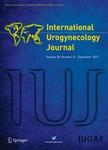版权所有:内蒙古大学图书馆 技术提供:维普资讯• 智图
内蒙古自治区呼和浩特市赛罕区大学西街235号 邮编: 010021

作者机构:Sichuan Univ West China Univ Hosp 2 Dept Obstet & Gynecol Chengdu 610041 Peoples R China Sichuan Univ West China Univ Hosp 2 Ctr Translat Med Key Lab Birth Defects & Related Dis Women & Childr Chengdu 610041 Peoples R China Sichuan Univ West China Univ Hosp 2 Lab Metabol & Gynecol Dis Res Chengdu 610041 Peoples R China Guangzhou AID Cloud Technol Co Ltd Dept Data Sci Guangzhou 510663 Peoples R China
出 版 物:《INTERNATIONAL UROGYNECOLOGY JOURNAL》 (Int. Urogynecol. J.)
年 卷 期:2025年
页 面:1-9页
核心收录:
学科分类:1002[医学-临床医学] 100210[医学-外科学(含:普外、骨外、泌尿外、胸心外、神外、整形、烧伤、野战外)] 10[医学]
基 金:National Key Research and Development Program of China [2021YFC2009100] Key Research and Development Program of the Health Commission of Sichuan Province [21ZD002] Key Research and Development Program of Science & Technology Department of Sichuan Province [23ZDYF2049]
主 题:Machine learning Pelvic organ prolapse Risk assessment model Shapley additive explanations method
摘 要:Introduction and HypothesisWe aimed to develop and validate a clinically applicable risk assessment model for identifying women at a high risk of pelvic organ prolapse (POP) based on a retrospective *** study enrolled patients with and without POP between January 2019 and December 2021. Clinical data were collected and machine learning models were applied, such as multilayer perceptron, logistic regression, random forest (RF), light gradient boosting machine and extreme gradient boosting. Two datasets were constructed, one comprising all variables and the other excluding physical examination variables. Two versions of the machine learning model were developed. One was for professional doctors, and the other was for community-health providers. The area under the curve (AUC) and its confidence interval (CI), accuracy, F1 score, sensitivity, and specificity were calculated to evaluate the model s performance. The Shapley Additive Explanations method was used to visualize and interpret the model *** total of 16,416 women were recruited, with 8,314 and 8,102 in the POP and non-POP groups respectively. Eighty-seven variables were recorded. Among all candidate models, the RF model with 13 variables showed the best performance, with an AUC of 0.806 (95% CI 0.793-0.817), accuracy of 0.723, F1 of 0.731, sensitivity of 0.742, and specificity of 0.703. Excluding the physical examination variables, the RF model with 11 variables showed an AUC, accuracy, F1 score, sensitivity, and specificity of 0.716, 0.652, 0.688, 0.757, and 0.545 *** constructed a clinically applicable risk warning system that will help clinicians to identify women at a high risk of POP.